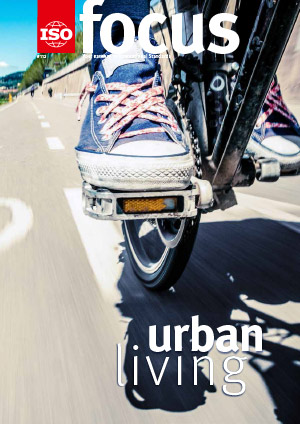What does a “smart” city look like? To find out, read the latest ISOfocus, which looks at some of the smart city trends, the challenges, and how standards provide the platform from which smart cities can grow.
In his opening comment, Olivier Peyrat, ISO Vice-President (finance) and Director-General of AFNOR Group, stresses how, without a coherent strategy to run cities more efficiently, the global targets on greenhouse gas emissions and the ambitions for sustainable growth cannot be achieved. “Globally, urban areas are home to around half the world’s population and generate around 80 % of global Gross Domestic Product (GDP). They are responsible for around 70 % of global energy consumption and energy-related greenhouse gas emissions. This startling statistic, together with the prospect of uninterrupted growth of towns and cities all over the world, poses the crucial question of sustainable development on an urban level.”
Enter smart cities, central to any solution to global economic, social, energy or environmental challenges. International Standards provide sustainable solutions to the complexities of the urban environment and improve quality of life for the millions of city dwellers across the world. And indeed, the number of standards keeps on growing.
So exactly how much can ISO standards help? Quite a lot, actually. Standards play a major role in facilitating the exchange of expertise and best practices, stimulating innovation and helping cities procure more cost-effective and reliable systems that meet their genuine needs.
In this ISOfocus issue, we look at how standards help tackle urban challenges from traffic congestion to coping with a booming population. From smart city technologies and programmes to good old-fashion bicycle cities, these trends are expected to help make city living more efficient and sustainable.
We also look at how the use of information and communication technologies (ICTs) creates new services for citizens, enhances or replaces infrastructure, and improves economic growth. This “citizen-centric” approach will change how citizens will move, think, cooperate and work in ways that will be smart, very smart indeed.
Where can you find the essentials to help shape the city of tomorrow? We hope this edition of ISOfocus gives you the information, insight, and some new ideas of your own. Why wait to learn more. The global race is on to develop a more sustainable future for the world’s urban areas.


